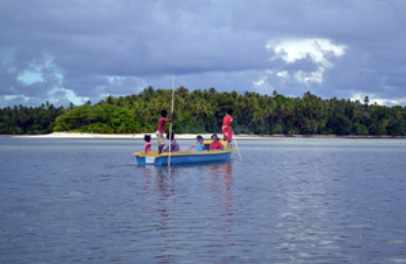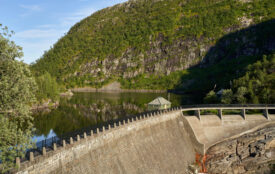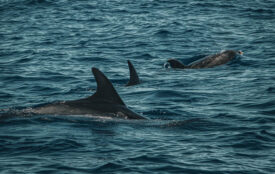Sinking islands: Does the rise of sea level endanger the Takuu Atoll in the Pacific?
In the last decades, sea level has been rising continuously – about 3.3 mm per year. For reef islands such as the Maldives or the Marshall Islands a sinister picture is being painted evoking the demise of the island states and their cultures.
Are the effects of sea-level rise already noticeable on reef islands? Scientists from the ZMT have now answered this question for the Takuu Atoll, a group of Pacific islands, located northeast of Papua New Guinea.
Reef islands are among the landforms most vulnerable to the rise of the sea level. Researchers have already predicted that the Takuu Atoll with its ancient Polynesian culture will no longer be habitable within the next decades. The island government is said to have already made plans to relocate the community as so-called “climate refugees”. The alarming problem has also been the focus of an award-winning documentary called “There Once Was An Island” from 2010.
Not many studies, however, have as yet investigated the visible effects of climate change on reef islands. For the first time ZMT geologist Dr. Thomas Mann has now examined the changes in vegetated land area and the position of the coastline on Takuu since 1943 by closely studying areal photographs from the Second World War and an extensive set of satellite images. “The result came as quite a surprise to us,” he says. “Although the rise of the sea level started about 100 years ago and has been progressing much faster since the 1990s, the vegetated land area of the Takuu islands has grown by a total of three percent between 1943 and 2012.”
Although a reversing trend has emerged since 2008, the loss of land however happened too suddenly to be attributed to sea-level rise. The erosion started immediately after the atoll was affected by storm waves, which eroded large parts of the islands’ coasts and contributed to the horror scenario of the sinking islands. “After such climate events islands can recover – albeit very slowly,” says Dr. Thomas Mann. “Our data have shown that the renewal of the islands already started a few years after the storm tide.”
Changing beach dimensions also added to the picture of the sinking Takuu Atoll, but the beaches only decreased in size on a number of islands – a process which was in fact man-made as the islanders removed large amounts of sand to erect artificial hills on which they traditionally built houses for the village elders. Furthermore, the islanders had constructed a massive seawall on the main island of Nukutoa to safeguard against storm tides. Instead of smoothly rolling onto the shallow shore the waves now hit the wall with huge force, whirling up and seizing the sandy beach below.
“Overall, our data do not allow any conclusion that current sea-level rise has had a negative effect on the Takuu islands in the last 70 years,” explains Dr. Mann. Coral islands are also not powerless against sea-level rise, he says. “These islands are lined with living corals, which can grow up to 20 cm per year. Entire coral reefs can still grow by around 8 mm a year, so in a manner of speaking they are faster than the current rise of the sea level.”
However, a coral reef can only keep up the pace if it is in healthy condition and not impaired by pollution, higher water temperature or destructive fishing methods. Dr. Mann says: “The health of coral reefs is a deciding factor for the future stability of reef islands.”
Publications:
Mann, T., Westphal, H. (2015) Multi-decadal shoreline changes on Takú Atoll, Papua New Guinea: Observational evidence of early reef island recovery after the impact of storm waves. Geomorphology 257. doi:10.1016/j.geomorph.2015.12.028
Mann, T., Bayliss-Smith, T., Westphal, H. (2015). A Geomorphic Interpretation of Shoreline Change Rates on Reef Islands. Journal of Coastal Research. DOI: 10.2112/JCOASTRES-D-15-00093.1









